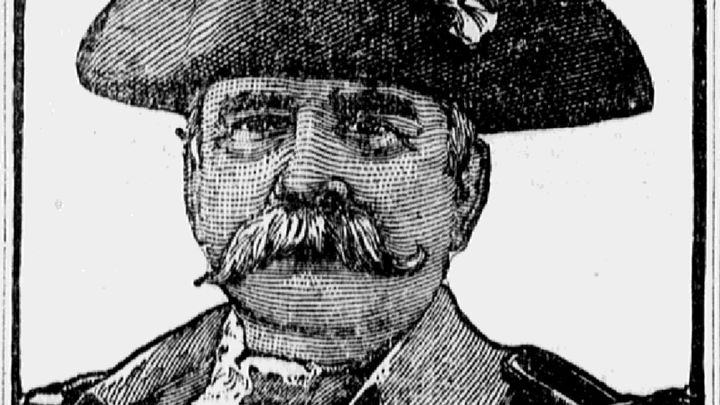
Paul Edmond Beckwith Headstone Fund
Paul Edmond Beckwith was born in St. Louis, Missouri, on September 22, 1848. He attended St. Joseph’s College in Bardstown, Kentucky, and St. Louis University, but his studies were interrupted by the American Civil War. His grandfather, Louis Réné Paul, was a veteran of the Napoleonic Wars. Gabriel R. Paul, his uncle, was a Union general. It’s possible that Beckwith felt a calling to serve his country despite his youth. He allegedly ran away from home during the summer of 1861 and joined Major General John Charles Frémont’s command. After only a month, he was discovered and sent home.
His family reportedly sent him to school in Europe to keep him out of the Army. He attended the Jesuit college of Stella Matutina in Feldkirch, Austria, where he mastered the German language. Sherlock Holmes author Arthur Conan Doyle studied at the same school in the mid-1870s. Next, Beckwith traveled to Prussia and enrolled at the University of Bonn to study civil and mining engineering. In March 1867, Beckwith, a devout Catholic, left for Rome and enlisted in the Pontifical Zouaves. He served with the unit until August. He always cherished his time as one of the Pope’s soldiers.
Beckwith returned to the United States in 1869. He worked for Arthur H. Van Sickle’s gallery in South Bend, Indiana, and eventually took it over. He met Martha B. Chord, the daughter of a clerk in the St. Joseph County Court and noted community member, while in Indiana. He married her on October 15, 1872, but she tragically died six years later at the age of 29. In 1875, he wrote his wife, telling her he had been appointed a lieutenant in the U.S. Army and would be sent to New Mexico. But President Ulysses S. Grant instead appointed him an Indian agent at Devil’s Lake. After a year, he resigned from this position and went to Colorado to pursue a civil and mining engineering career. In 1878, he took a job with the Studebaker Wagon Works in South Bend, Indiana.
In 1886, Beckwith came to Washington, D.C. and worked as an assistant curator in the history division at the Smithsonian National Museum. He remained in the position for over 20 years. He handled installing and caring for the museum’s historical collections and was in charge of the collection’s coins, medals, and ceramics. The exhibits he arranged were said always to be pleasing and attractive and won the museum many generous and appreciative friends. In 1898, the Smithsonian’s secretary, Samuel P. Langley, sent Beckwith on a mission to Cuba and Puerto Rico to obtain Spanish-American War relics and historical and archeological objects to exhibit at the museum.
Besides being a curator, Beckwith was also a writer. He authored two books, The Beckwiths and the Creoles of St. Louis, and published numerous articles. He was also involved with several organizations, such as the American Anthropological Association and the 1st Regiment Minute Men, a national organization formed to perpetual the memory of the American Revolution’s Minutemen.
On June 27, 1907, Beckwith died at his home in Washington, D.C., at 59. His remains were taken to St. Louis and buried alongside family members at Calvary Cemetery. His grave is currently unmarked. A headstone is being commissioned and produced by the Tom Murray Monument Co., located in St. Louis, Missouri. It will list his two most notable achievements: Pontifical Zouave and Smithsonian curator.

Organizer
Frank Jastrzembski
Organizer
Hartford, WI